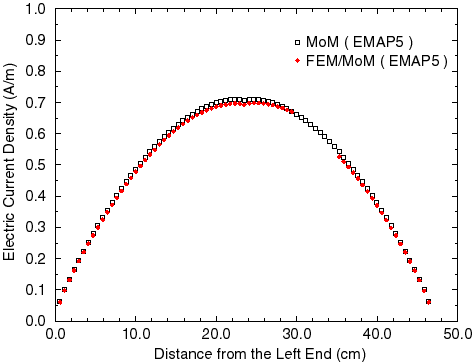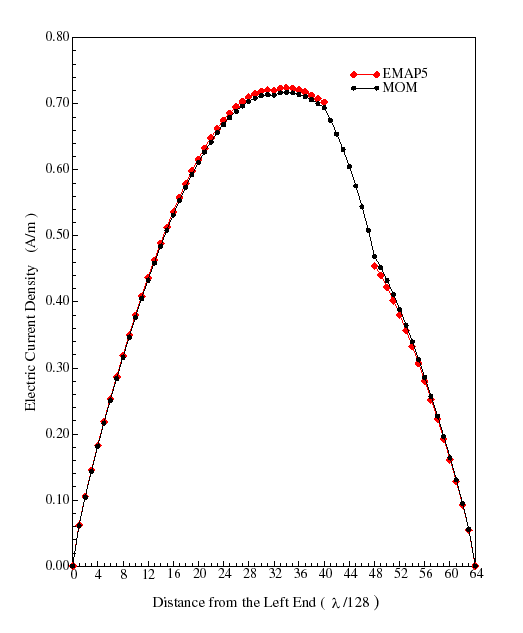
When er=1, the dipole is in free space. The input file for SIFT5 is as follows:.
# example 2: a flat dipole placed on an air dielectric slab
unit 0.1175 cm
boundary 0 0 0 50 48 16
celldim 0 50 5 x
celldim 0 48 8 y
celldim 0 16 8 z
dielectric 0 0 0 50 48 16 1.0 0.0
conductor -250 16 16 150 32 16 5 8 8
vsource -50 16 16 -50 32 16 300 x 1.0
output -250 16 16 0 32 16 y example2.out
output 50 16 16 150 32 16 y example2.out
The structure is divided into 600 tetrahedra and 648 triangles. The total number of unknowns is 966 after the MoM equation is coupled to the FEM equation. Eight edges are used to model the behavior of the currents in the junction ar eas.
Figure 11 shows results obtained by the hybrid (FEM/MoM) EMAP5 code along with comparison of results obtained using the MoM portion of the EMAP5 code. Very good agreement is obtained between the two methods. Note that hybrid EMAP5 gives equivalent currents rather than actual currents on the conductor/dielectric interface. Only the actual currents obtained by the hybrid EMAP5 code are shown in Figure 11.
Figure 12 shows results obtained by the hybrid EMAP5 code when we set er =4.0. It is consistent with results obtained using the MoM surface formulation given by Ponnapali et al.[1].


References:
[1] S. Ponnapalli, P.Midya, and H. Heeb, "Analysis of Arbitrarily Shaped Three-Dimensional Composite Radiating Structures Using a Method of Moments Surface Formulation,"To appear in IEEE Trans. Antenna and Propagation.